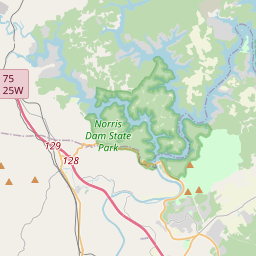Civil War in Anderson County
Historical marker location:






"Skulking bushwhackers"
April 12, 1861: The Civil War begins with the Confederate attack on Fort Sumter, located in South Carolina's Charleston Harbor.
April 15, 1861: President Abraham Lincoln issues a call for 75,000 volunteers to serve in the Union Army to suppress the rebellion.
May 24, 1861: The first major land battle, known as the First Battle of Bull Run (or First Battle of Manassas), takes place in Virginia. It ends in Confederate victory.
September 17, 1862: The Battle of Antietam in Maryland becomes the bloodiest single-day battle in American history, with heavy casualties on both sides. The Union forces, commanded by General George McClellan, manage to halt Confederate General Robert E. Lee's advance into Union territory.
January 1, 1863: President Lincoln issues the Emancipation Proclamation, declaring that all slaves in Confederate-held territories are to be set free. However, the proclamation does not immediately free all slaves in the United States.
July 1-3, 1863: The Battle of Gettysburg in Pennsylvania takes place, resulting in a significant Union victory and inflicting heavy casualties on Confederate forces. It marks a turning point in the war.
November 19, 1863: President Lincoln delivers the Gettysburg Address, emphasizing the principles of liberty, equality, and the preservation of the Union.
April 9, 1865: General Robert E. Lee surrenders to Union General Ulysses S. Grant at Appomattox Court House in Virginia, effectively ending the Civil War.
April 14, 1865: President Lincoln is assassinated by John Wilkes Booth while attending a play at Ford's Theatre in Washington, D.C.
May 10, 1865: Confederate President Jefferson Davis is captured, signaling the collapse of the Confederate government.
December 6, 1865: The Thirteenth Amendment to the United States Constitution is ratified, officially abolishing slavery throughout the country.
While this timeline provides an overview of key events, it is important to note that the Civil War spanned over four years, from 1861 to 1865, and encompassed numerous battles, campaigns, and political developments that shaped the course of American history.
The Oak Ridge National Laboratory, located in Oak Ridge, Tennessee, played a crucial role in the development of the atomic bomb during World War II. It was also a key site for nuclear research during the Cold War.
During the early 19th century, Anderson County experienced significant growth. The construction of the Tennessee River brought transportation opportunities, and the arrival of the railroad in the 1850s further fueled economic development. The county became a major agricultural center, with farming and logging being the primary industries. It also played a role in the Civil War, with both Union and Confederate forces occupying the region at different times.
In the early 20th century, Anderson County underwent industrialization, thanks to the Oak Ridge Reservation. Established in 1942 as part of the Manhattan Project, the reservation played a crucial role in developing the atomic bomb during World War II. The secret nature of the project resulted in the rapid growth of Oak Ridge, attracting thousands of workers from across the country. The impact of this scientific endeavor on the county's economy and population was significant.
In recent years, Anderson County has focused on diversifying its economy beyond industry and agriculture. It has developed a strong tourism industry, with attractions such as Norris Dam State Park and the Museum of Appalachia drawing visitors from all over. The county continues to embrace its history and natural beauty while also embracing new opportunities for growth and development.
Anderson County Timeline
This timeline provides a concise overview of the key events in the history of Anderson County, Tennessee.
- 1801: Anderson County established
- 1803: Norris Dam constructed
- 1856: First railroad built in the county
- 1861-1865: County impacted by the American Civil War
- 1936: Oak Ridge established as part of the Manhattan Project
- 1943: Clinton Engineer Works created in Oak Ridge
- 1945: World War II ends and the Manhattan Project concludes
- 1946: Oak Ridge becomes a city
- 1956: Melton Hill Dam constructed on Clinch River
- 1989: Anderson County Courthouse added to the National Register of Historic Places
- 1996: American Museum of Science and Energy opens in Oak Ridge